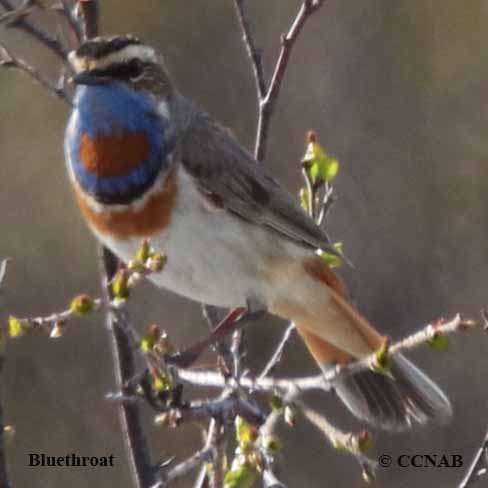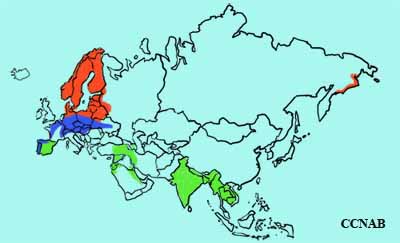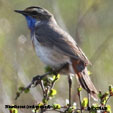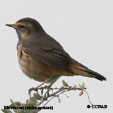North American Bird Search Box
This search box can be used to find bird species using bird's english, french or latin name, or to identify bird by its 4 letter Alpha Code
Field Guide for all the Birds of North America
Bluethroat
4 Letter (english names) Alpha Code: BLUE (2)
Gorgebleue à miroir
Luscinia svecica
Information, images and range maps on over 1,000 birds of North America, including sub-species, vagrants, introduced birds and possibilities

There are two sub-species or races of the Bluethroat. Of these two, the Bluethroat (red-spotted) is the only one that nests in North America. These attractive birds are found in the northwestern regions of Alaska. In the winter months they return to Asia. The other sub-species is the Bluethroat (white-spotted). This bird species is seen mostly in Europe. It spends its winters in the southern regions of Europe and are a common sight in Portugal. Both these races have dull brown backs, their tail is also brown but when flared open then bright orange feather tips appear.
- Summer
- Year Around
- Winter

The Bluethroat is a member of the flycatcher family. Their habitat is generally found near water, with short stunted trees which they use to perch on. During their mating season, the male can be seen taking flight from these short trees, flying high up into the air, singing and diving back to the ground. When perched it spreads its colourful orange tail feathers and displays its colourful throat.
Reference to Other Bird Site:
ABA - American Birding Association This site represents an organization that maintains official records of all birds species that have been proven to have been seen inside the perimeters of the North American Continent and the surrounding bodies of water. Regular revised versions are posted to keep the bird list current at all times. This is the list used by all serious birders over their lifetime. You may be aware of the movie called the "Big Year". It was with this list that all the competing birders used in an attempt to set a new record as to how many bird species that could be seen by an individual birder in one calendar year.

